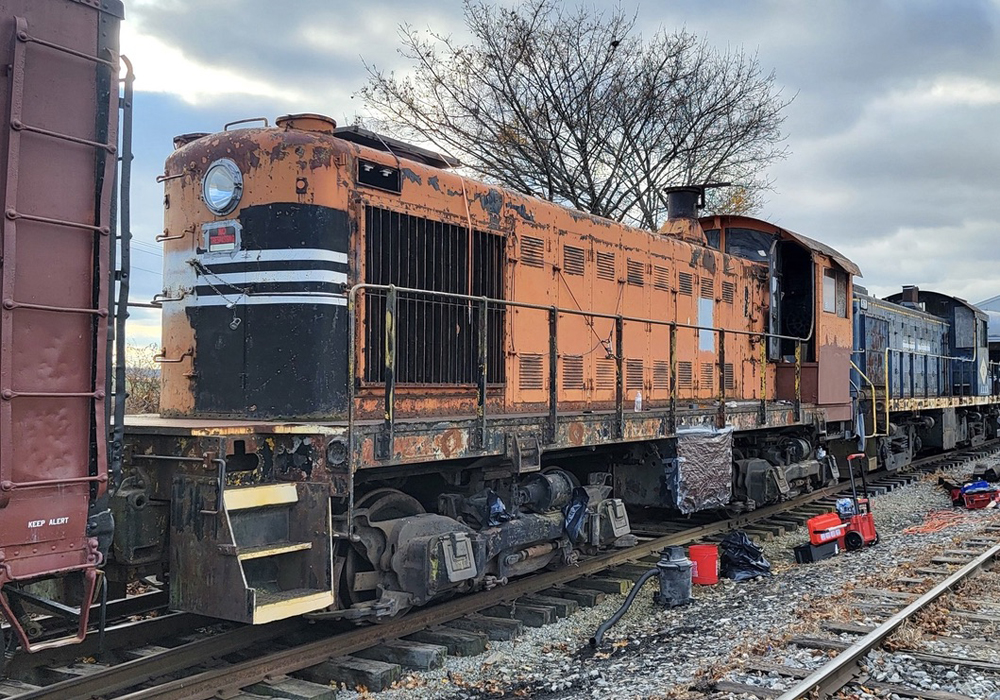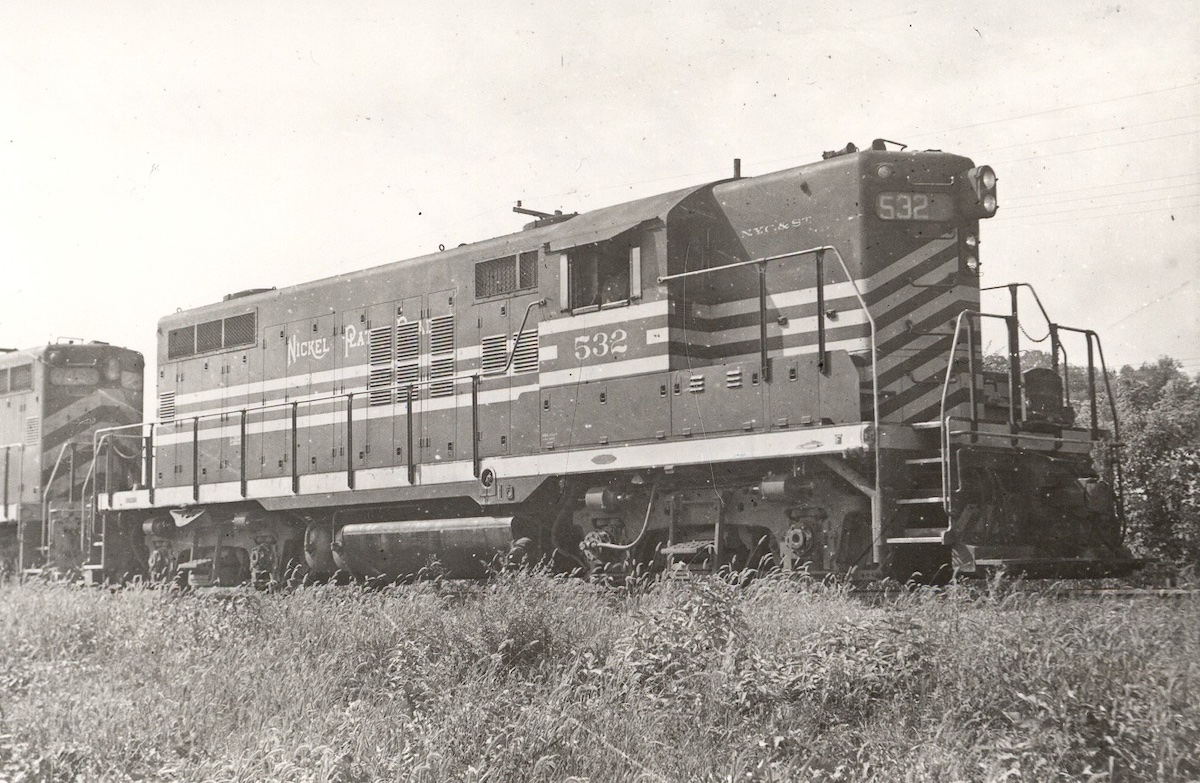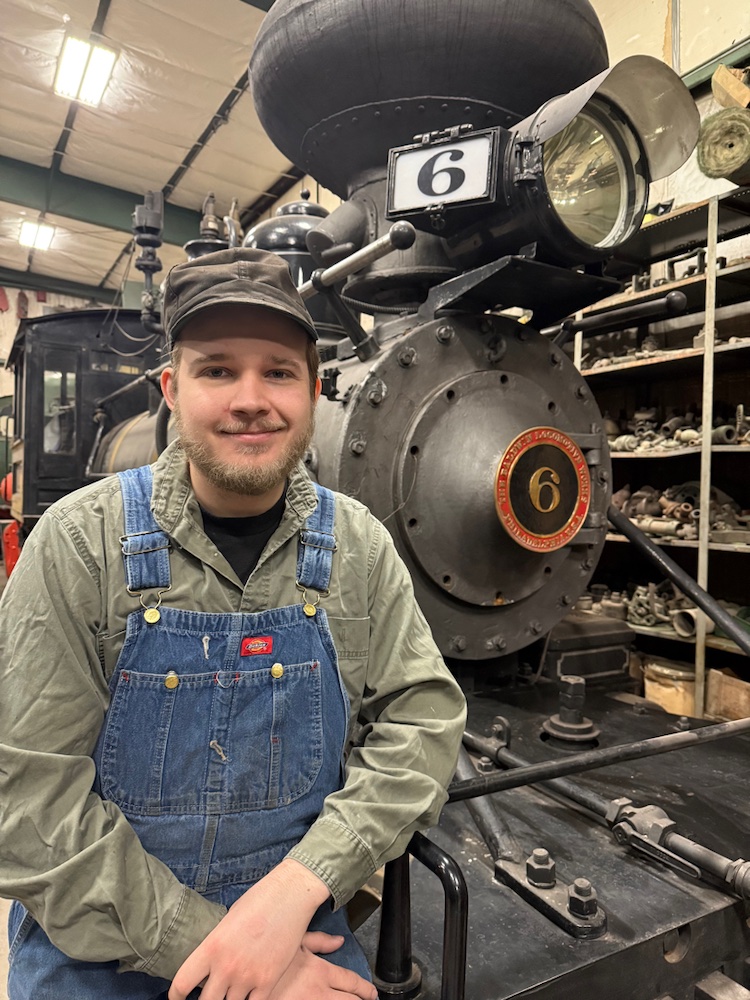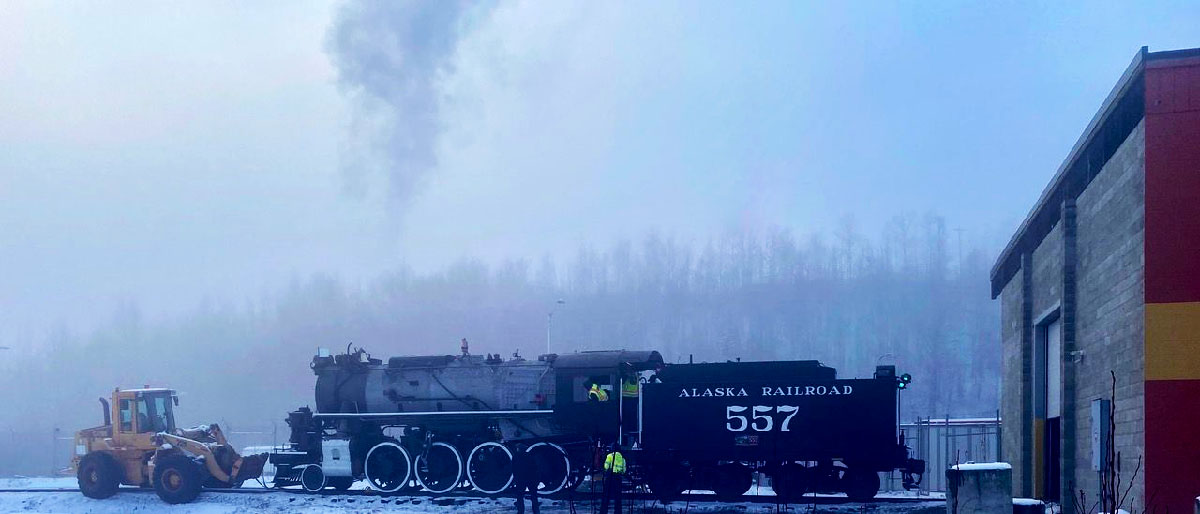
WASILLA, Alaska — After more than 500,000 volunteer working hours, the 557 Restoration Co. successfully fired the last Alaska Railroad steam locomotive on Nov. 8, 2025. The rebuild is now 95% complete, “ … with all the expensive and labor intensive stuff behind us,” says Patrick Durand, 557 Restoration Co. president.

The locomotive was pulled outside the company shop by a bucket loader. Jeff DeBroeck, chief mechanical officer, placed a lit rag into the oil mist coming off the burner inside the firebox. No. 557 was fired for the first time in more than 60 years.
“After 13 years of work,” says Durand, “the entire crew was elated to see the light off and the slow rise of boiler pressure with the burner controls on air from the shop. When we had 10 psi on the gauge we switched to steam and the fire responded smartly.”
No. 557 was fired for 5 hours, consuming 140 gallons of an 80% used oil-20% diesel fuel mixture. Fuel is provided by recycling management company Republic Services, who has agreed to donate fuel for No. 557’s first two years of operation.
“The burner never burped except when it was asking for more fuel,” says Durand. “We took three hours to bring up 180 psi and then started exercising the air pump, both starter valves and injectors, the turbo generator, and, of course, the whistle. Eventually we had the safety valves lifting at 225 psi.”
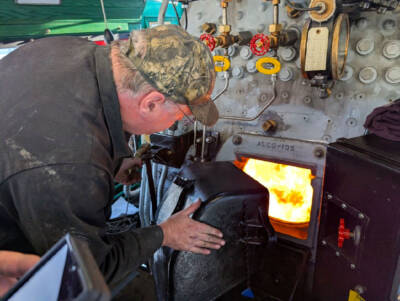
No. 557 is one of 2,120 S-160 class 2-8-0 Consolidations built for the U.S. Army Transportation Corp between 1942 and 1945. Originally intended for use in Europe and Africa, 12 S-160s were transferred for service in Alaska to relieve an acute motive power shortage. The Alaskan 12 were modified for the northern climate with larger compound air compressors mounted on the front pilot, steam coils to heat the cabs, and snowplows. Additionally, in 1954, when No. 557 became the final steam locomotive on the roster, it was converted from coal fired to oil burning. The railroad then eliminated its coaling facilities.
No. 557 was built by the Baldwin Locomotive Works with serial number 70480. It was U.S. Army No. 3523 and renumbered to No. 557 when it arrived in Alaska in December 1944.
The locomotive became the last Alaska Railroad steam engine due to a diesel shortcoming. The area around Nenana, Alaska, suffers from regular flooding along the Tanana and Nenana Rivers. The railroad’s new diesel-electric locomotives had trouble navigating flooded tracks as their traction motors would short out. No. 557 was found to easily ford water up to 2 feet over the rails. Aside from flood duty, No. 557 pulled the occasional special event train. The last train it pulled before being retired was a run from Anchorage to the state fair in Palmer, Alaska, on Sept. 5, 1959.
A Washington scrap dealer and museum owner, Monte Holm, purchased No. 557 in 1964. On June 14, 1965, the locomotive left from Whittier, Alaska, aboard a Train Ship boat bound for Everett, Wash. Instead of scrapping the engine, Holm preserved it for school groups to witness steam engine history in action. For the next three decades, Holm kept it in running condition and parked at his hobo museum — the House of Poverty — in Moses Lake, Wash. Upon his passing the museum was closed on the locomotive left without a caretaker.
In 2011, Jim and Vic Jansen, owners of several Alaska-based transportation companies, purchased the locomotive from the Holm estate, ensuring its return to Alaska. The Jansens donated the locomotive to the Alaska Railroad, stipulating that it be relocated to Anchorage, rehabilitated, and put back into service. The Alaska Railroad arranged for No. 557 to be moved home, arriving in Whittier on Jan. 3, 2012.
Since that time, The Engine 557 Restoration Co., a non-profit group established to restore, maintain, and operate the locomotive have been working on its rebuild.
Moving No. 557 toward completion, the next steps include:
- Installing the brake rigging, which has been rebuilt.
- Relining the crosshead guides with new bearing bronze, leading to valve gear assembly and rod installation.
- Fitting and painting the new boiler jacket.
Reflecting on the test firing milestone, Durand could not emphasize enough the volunteer effort. “I really want to credit and recognize the all volunteer 557 Mechanical Department Crew that got us to this point,” he says.

For more information on the project, including detailed monthly technical updates, or to make a contribution please visit the 557 Restoration Co. website or Facebook page.







